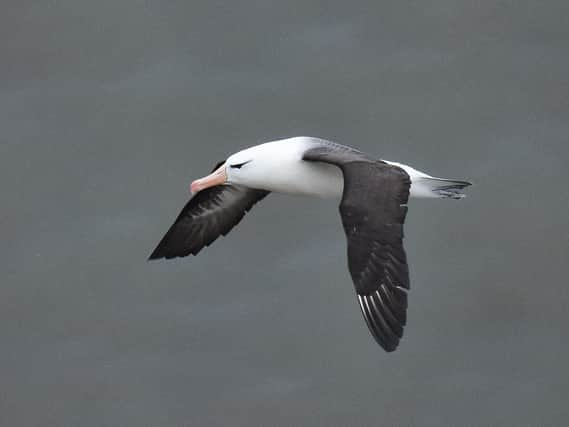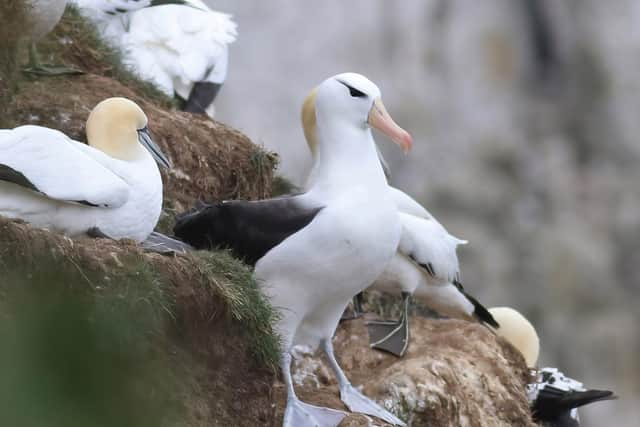Rare albatross seen off the Yorkshire coast


The black-browed albatross is a rare sight in the northern hemisphere and most of the world's breeding population live on the Falkland Islands and South Georgia Islands in the South Atlantic. Only two birds have been recorded over European waters in the past decade.
Yesterday the bird was seen near the RSPB Bempton Cliffs reserve - one of the largest seabird colonies in Europe - and was spotted again today.
Advertisement
Hide AdAdvertisement
Hide AdAround 300 birders are already in the area after news of the sighting spread, and more are expected to arrive.
Between 2014 and 2017, a 'lost' albatross from the Falklands that was thought to have been blown off course settled in Germany and visited the Yorkshire coast every summer for brief periods. However, in 2016 a different, younger, bird was also seen.
Members of Flamborough Bird Observatory are now trying to establish whether the albatross is either of these two birds.
A black-browed albatross that was blown off course in the North Atlantic in the 1960s subsequently spent many years living in a gannet colony in the Shetland Isles.
Advertisement
Hide AdAdvertisement
Hide AdThere are around 600,000 breeding pairs remaining, mostly in the Falklands, South Georgia and Chile. They breed only in the southern hemisphere but have a northerly migratory pattern, which explains the occasional sightings in the North Atlantic. These displaced birds are considered 'vagrants' because they have wandered far outside their normal range. They are often exiled for decades as they struggle to return to the Southern Ocean.


Albatrosses are traditionally associated with sailors and the age of maritime exploration, when they were hunted extensively, although they were also viewed as totems by superstitious seafarers.
Flamborough Bird Observatory chair Craig Thomas said: "The black-browed albatross turned up yesterday at RSPB Bempton Cliffs and is still present this morning; it has ranged from the cliffs at Bempton to Flamborough lighthouse. Its an adult bird and must be at least eight years old, but could be much older - they can live up to 70 years old.
"There have been just over 30 records of black-browed albatross in the UK; one, quite possibly the same bird, briefly visited Bempton in 2017 having been seen earlier in Germany. Yesterday's sighting was more surprising because there haven't been any sightings in the North Sea this year. They originate from the South Atlantic and it is very rare for individuals to travel to the northern hemisphere.
Advertisement
Hide AdAdvertisement
Hide Ad"Today's bird is clearly looking for a place to rest on the cliffs, but the local gannets are often quite aggressive towards it, despite the albatross being a bigger bird.
"There have only been two birds recorded in the North Atlantic in the past 10 years, so it's probably one of these. They often follow gannets and tag along with them, then sit in the colony. There are around 15,000 pairs of gannets at Bempton and I think it has followed them back to the cliffs.
"It will be exiled forever now. Albatrosses have very long wings, but they don't flap them much and rely on updrafts. This means they can't usually get across the equator because the air is too still, so it's unlikely it'll get back to the Falklands. It will live out its bachelor days with the gannets for company!"